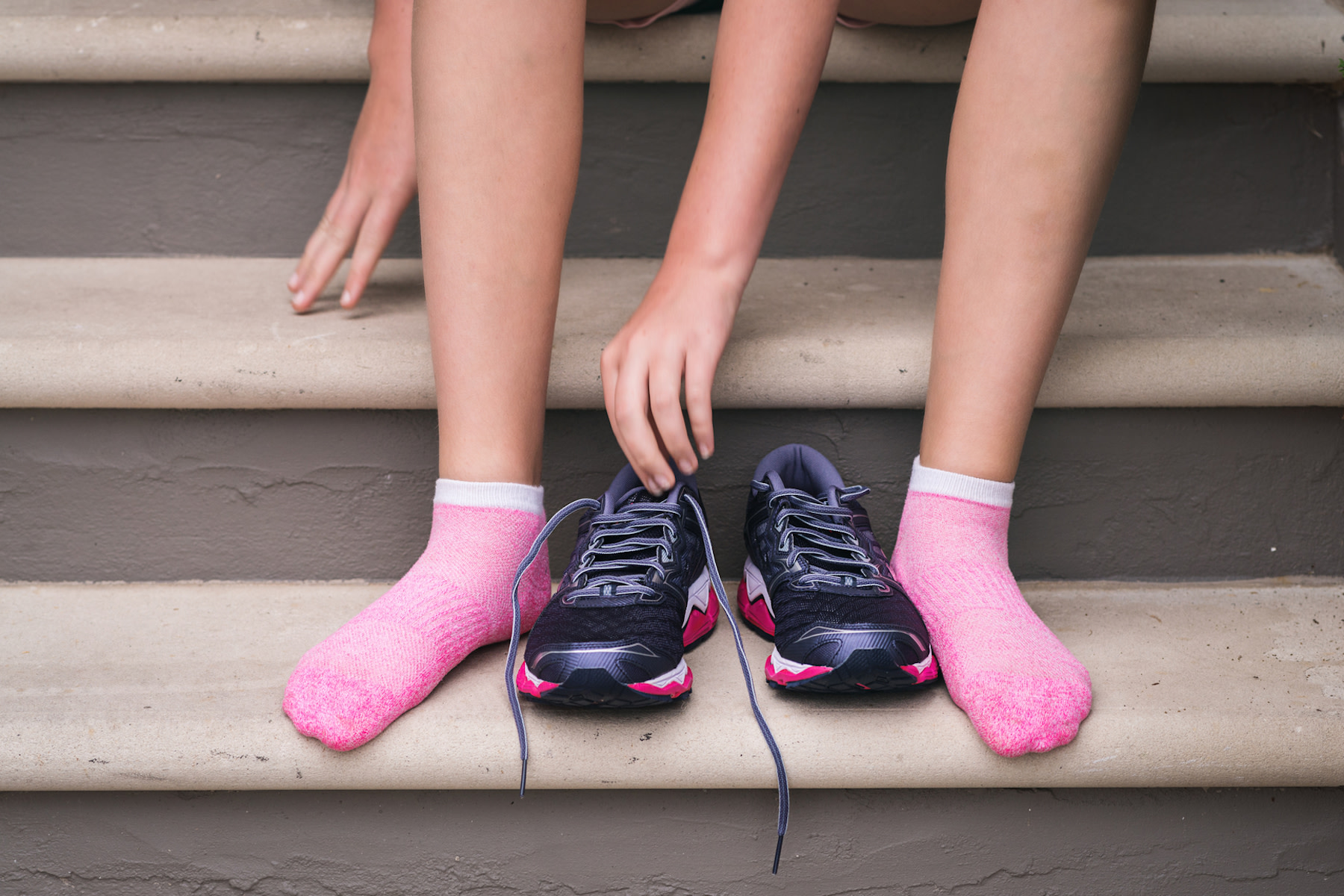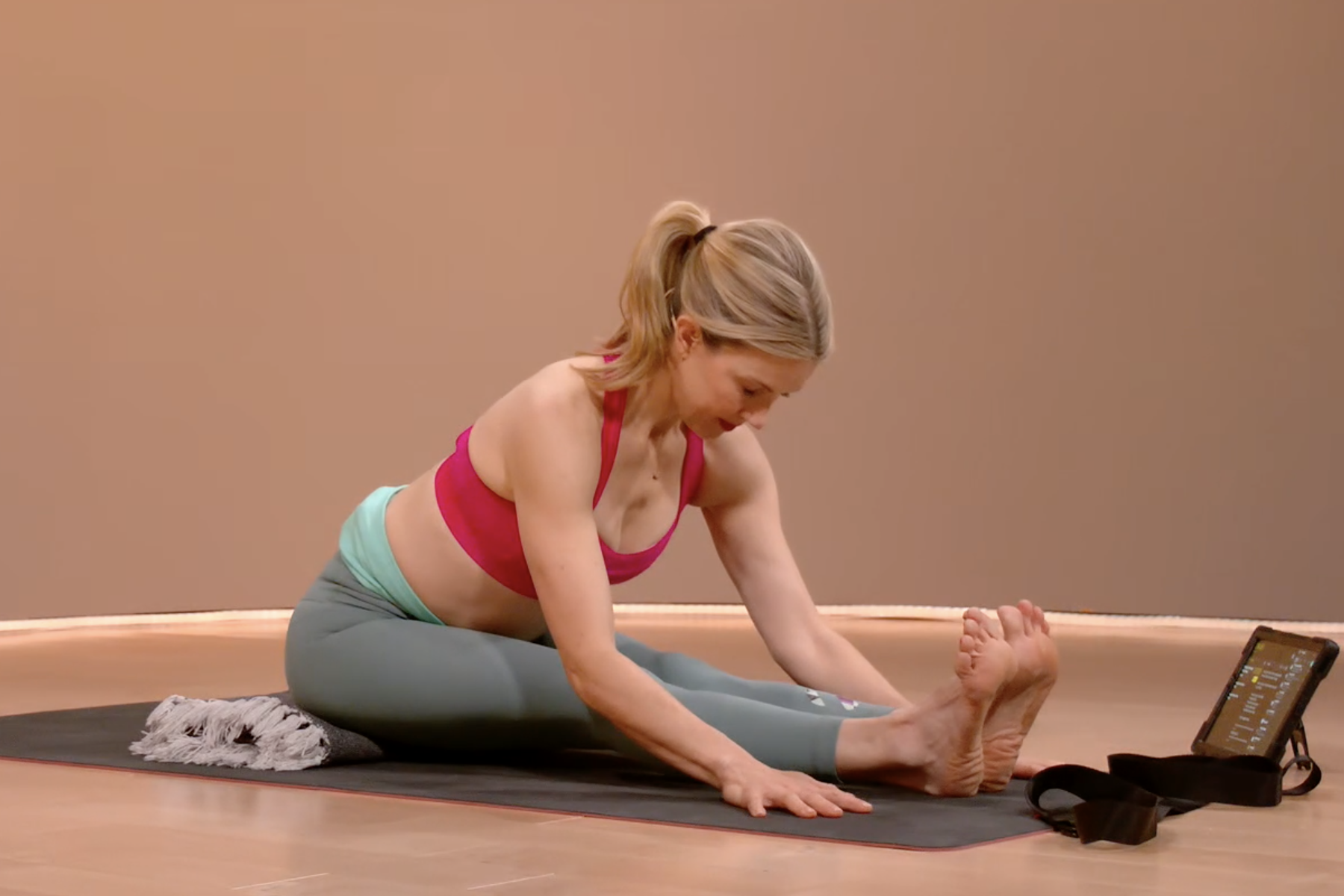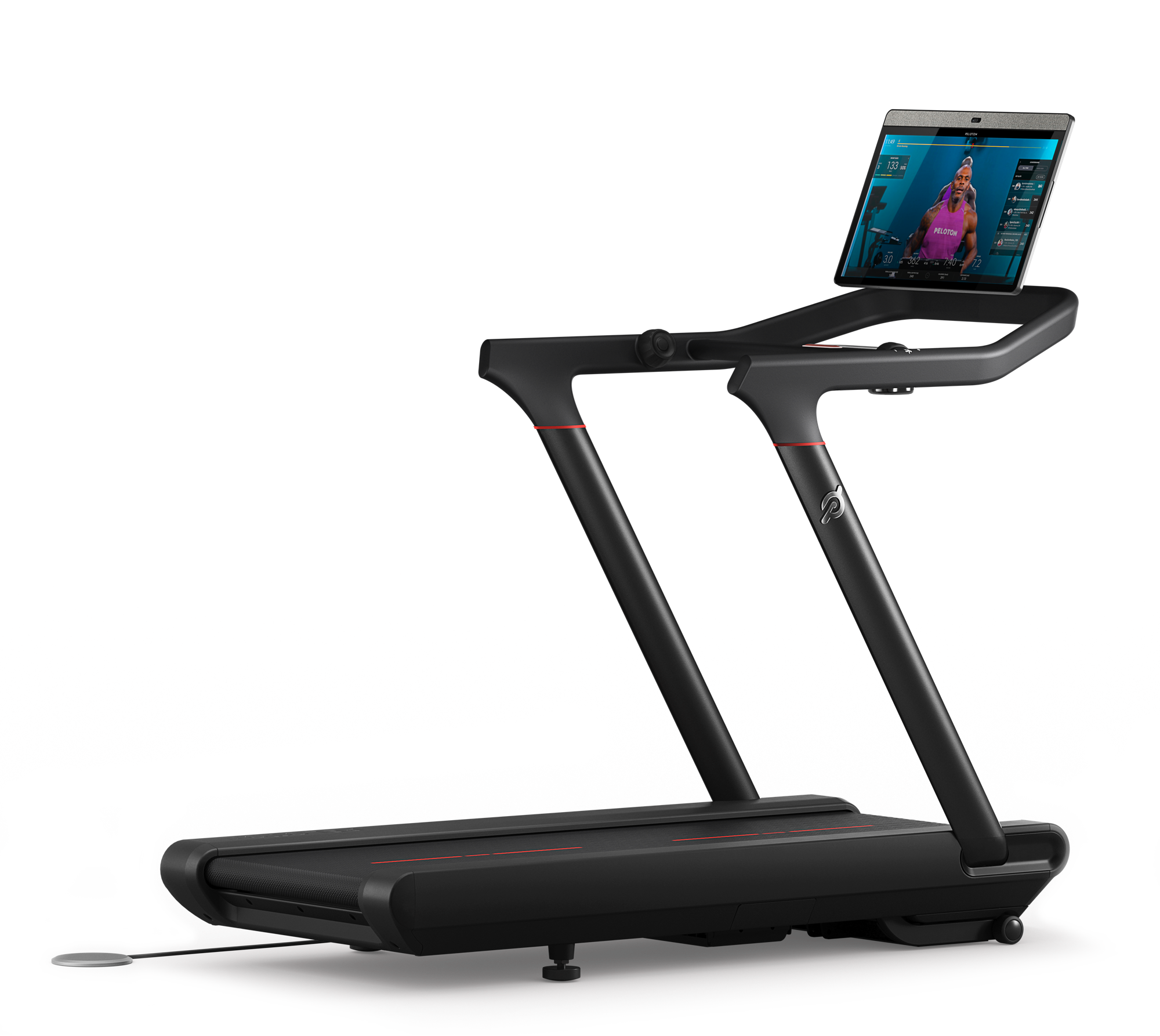
©BONNINSTUDIO/Stocksy United
Trying to Avoid Shin Splints? Follow These 6 Expert-Recommended Tips
Read this before your next run.
By Jen Ator •
What Are Shin Splints?
What Causes Shin Splints?
6 Ways to Avoid Shin Splints
3 Stretches to Help Avoid Shin Splints
Is it OK to Ignore Shin Splints?
You’re committed. You’re excited. You’re ready. Whether you’re eyeing a big race or simply trying to stick to a running plan, one thing’s for sure: Mentally, you’ve got this. But after only a few weeks of regularly lacing up, you suddenly notice a dull ache running down the front of your legs, and you start to feel like—physically—your body is not keeping up.
Discover more ways to reach your goals with Peloton
Shin splints can feel like a cruel joke. They’re one of the most typical running injuries and often caused in part by our own enthusiasm for the modality. But just because they’re common doesn’t mean they’re easy to manage. If you suspect your shins might be struggling, it’s important to act quickly. Here, we break down what causes shin splints, how to treat them, and, most importantly, what you can do to reduce your risk of those pesky pains putting you on the sideline.
What Are Shin Splints?
Shin splints are one of the most common running injuries. This condition refers to pain in the front part of your lower leg (your shin) that occurs when the muscles, tendons, and tissue around your shin bone (your tibia) become inflamed.
The most common type of shin pain is usually a reaction from your tibia to excessive load, with symptoms often felt on the inside of your shin (the medial side). This is why shin splints are technically referred to as medial tibial stress syndrome. “Think of it as a bony stress reaction,” says UK-based clinical lead physiotherapist Tom Goom. “The bone is unable to adapt to the stresses of sport, and instead becomes inflamed, irritated, and painful.”
What Causes Shin Splints?
Shin splints typically stem from repetitive activity, putting runners at a high risk for developing the condition. New runners are more susceptible as their muscles, bones, and ligaments haven’t been stressed in the same way before. But anyone who makes sudden changes to their physical activity could experience this injury.
Shin splints are what Goom calls “multi-factorial,” meaning there’s usually never just one thing to blame. “It is often linked to increased training duration or intensity—but lack of sleep and recovery may be a factor, as well as muscle strength, nutrition, and running gait,” Goom says.
Other factors associated with an increased risk of shin splints include:
Being female
Having a history of shin splints
Fewer years of running experience
Increased body mass index
While you may not be able to pin down the root cause, shin splints are hard to ignore. As a general rule, symptoms are typically concentrated in the inner border of your tibia, where muscles attach to the bone. According to the American Academy of Orthopedic Surgeons, shin splint pain may feel sharp or dull and can occur during or after exercise.
Shin splints are a very common overuse injury. But that doesn’t mean you should underestimate them. Bone stress injuries are some of the most problematic, as they require lengthy recovery times. If irritated for long enough, shin splints can potentially lead to a tibial stress fracture.
6 Ways to Avoid Shin Splints
The best way to avoid shin splints is by remembering what causes them: too much load. “That’s something for people to keep at the top of their minds,” Goom says. “In most cases, these tips won’t achieve much if you keep running too much.”
That being said, there are some strategies you can implement to help reduce the load on your tibia while you’re running, Goom says. This can help lower your risk of developing the condition—or making it worse.
1. Train Smarter
“The best way to avoid shin splints is to plan your training so it’s at a manageable level, progresses gradually, and includes sufficient recovery,” Goom says. Generally speaking, it’s a good idea to follow the 10 percent rule, which means not increasing your weekly mileage by more than that amount, says Austin Cagley, who leads Global Instructor Development at Peloton. For example, if you ran 10 miles this week, you would only increase to 11 miles the following week.
Recovery is also critical. “Training intensity is thought to play a key role in these injuries, so be as fresh as possible for the faster sessions by having an easy day the day before, and ensuring you get enough sleep,” Goom says.

© Gillian Vann/Stocksy United
2. Review Your Shoes
While cushioned shoes and orthotics haven’t been scientifically proven to help prevent shin splints, your choice of footwear absolutely matters. A 2022 meta-analysis review published in Sports Medicine found that running barefoot or in motion-control shoes increases tibial loads, which can raise your injury risk—especially during periods of intense training. If you can, it’s worth having your gait analyzed at a running store, where a specialist can check if your shoes are right for you.
3. Head to the Peloton Tread
Whether you’re training for a marathon or making your triumphant return after an injury, you might want to consider logging some of your mileage on a Peloton Tread. The same 2022 meta-analysis found a moderate decrease in tibial loading when individuals ran on a treadmill versus a concrete surface.
4. Shorten Your Stride
When you shorten your stride (while increasing your cadence), you’ll put less load on your feet, shins, and knees. But how do you know if you’re on target? Try counting your foot strikes on one side for a minute: A good number to aim for is 85 to 90 strikes on one side.
5. Avoid the Tightrope
The stress on your tibia while running is not only influenced by your stride length—but also your stride width. In a 2014 study published in the Journal of Biomechanics, researchers identified a link between narrow step width and tibial stress fractures. When they had runners, especially those with a crossover-like running style (think: walking on a tightrope), widen their steps by just 5 percent, the tension on their tibia was significantly reduced.
6. Build Strength
While Goom says there is little scientific evidence to prove it, hitting the weights each week can’t hurt if you’re trying to avoid shin splints. “Strength work can improve running efficiency and performance, so it’s a worthwhile consideration for its other benefits,” he says. “It may help to focus on the main shock absorbers: the calf, quads and glutes.” Aim to strength train twice a week, including exercises such as clamshells, walking lunges, glute bridges, and side planks in your routine.
3 Stretches to Help Avoid Shin Splints
Focusing on the muscles in your lower body, such as your calves, hamstrings, and quads, can help you avoid shin splints. Here, Cagley offers three stretches targeting these muscles to integrate into your workout regimen.

Antonio_Diaz/iStock / Getty Images Plus via Getty Images
1. Calf Stretch
Stand facing a wall. Place your hands on the wall at shoulder height.
Step back with your right leg. Keep your right heel on the ground.
Lean forward until you feel a stretch in your right calf.
Hold for 30 seconds. Switch sides and repeat.

2. Hamstring Stretch
Sit on the ground with your legs extended in front of you.
Bend forward at your waist and reach toward your toes. Your hands may land on your knees, shins, or feet, depending on your flexibility.
Keep your back straight and your hamstrings relaxed. Hold the stretch for 30 seconds.

3. Quad Stretch
Stand behind a chair or bench, placing your hands on the back of the object. (If you have good balance, you can also opt to do this stretch without the assistance of a chair or bench.)
Bend your right leg behind you. Grab your right foot with your right hand. Gently pull your right heel towards your glutes.
Hold the stretch for 30 seconds. Switch sides and repeat.
Is it OK to Ignore Shin Splints?
If your shins feel sore after a single workout, but the pain resolves itself quickly, you may be OK to just shake it off. But if symptoms are persisting for several runs, don’t wait to schedule a doctor’s appointment.
“Many running injuries will still improve if we train with low levels of pain, but this isn’t the case with shin splints,” Goom says. “In fact, we usually aim to keep training pain-free. It often takes longer to fully recover if you keep running with shin pain.”
If the pain is severe, worsening, accompanied by swelling or redness, or making it difficult to walk, those are all signs to contact a medical professional, Cagley says.
Taking time away is also critical. “For shin splints, it’s usually better to rest for a short period—two to three weeks—if there is no pain-free level of running,” Goom says “Once symptoms settle and you can manage impact pain-free, then you can plan a [graudal] return with your [healthcare] professional.”
If you’ve taken a few runs off but are feeling pain with even low-impact workouts, such as walking, you’ll want to see someone as soon as possible. “There are also some more serious injuries that can cause pain in this region,” Gook says. “Pain on the front of the shin bone can be from a ‘high-risk’ stress fracture, so it’s definitely best to rest until you’ve had it properly assessed, and to seek help sooner rather than later.”
This content is for informational and educational purposes only and does not constitute individualized advice. It is not intended to replace professional medical evaluation, diagnosis, or treatment. Seek the advice of your physician for questions you may have regarding your health or a medical condition. If you are having a medical emergency, call your physician or 911 immediately.
Explore Peloton Treads
Level up your inbox.
Subscribe for a weekly dose of fitness, plus the latest promos, launches, and events.
By providing your email address, you agree to receive marketing communications from Peloton.
For more about how we use your information, see our Privacy Policy.







